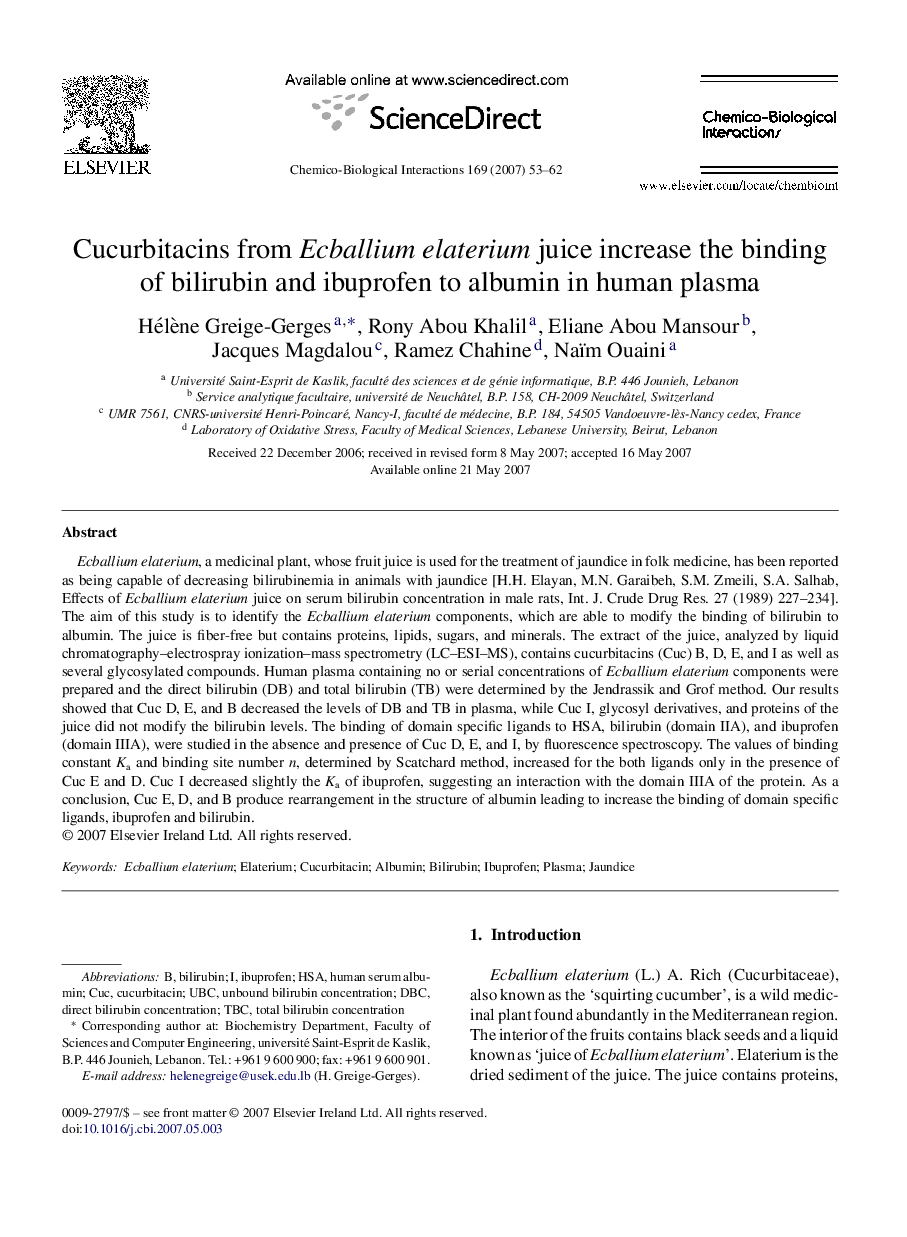| Article ID | Journal | Published Year | Pages | File Type |
|---|---|---|---|---|
| 2581842 | Chemico-Biological Interactions | 2007 | 10 Pages |
Ecballium elaterium, a medicinal plant, whose fruit juice is used for the treatment of jaundice in folk medicine, has been reported as being capable of decreasing bilirubinemia in animals with jaundice [H.H. Elayan, M.N. Garaibeh, S.M. Zmeili, S.A. Salhab, Effects of Ecballium elaterium juice on serum bilirubin concentration in male rats, Int. J. Crude Drug Res. 27 (1989) 227–234]. The aim of this study is to identify the Ecballium elaterium components, which are able to modify the binding of bilirubin to albumin. The juice is fiber-free but contains proteins, lipids, sugars, and minerals. The extract of the juice, analyzed by liquid chromatography–electrospray ionization–mass spectrometry (LC–ESI–MS), contains cucurbitacins (Cuc) B, D, E, and I as well as several glycosylated compounds. Human plasma containing no or serial concentrations of Ecballium elaterium components were prepared and the direct bilirubin (DB) and total bilirubin (TB) were determined by the Jendrassik and Grof method. Our results showed that Cuc D, E, and B decreased the levels of DB and TB in plasma, while Cuc I, glycosyl derivatives, and proteins of the juice did not modify the bilirubin levels. The binding of domain specific ligands to HSA, bilirubin (domain IIA), and ibuprofen (domain IIIA), were studied in the absence and presence of Cuc D, E, and I, by fluorescence spectroscopy. The values of binding constant Ka and binding site number n, determined by Scatchard method, increased for the both ligands only in the presence of Cuc E and D. Cuc I decreased slightly the Ka of ibuprofen, suggesting an interaction with the domain IIIA of the protein. As a conclusion, Cuc E, D, and B produce rearrangement in the structure of albumin leading to increase the binding of domain specific ligands, ibuprofen and bilirubin.
